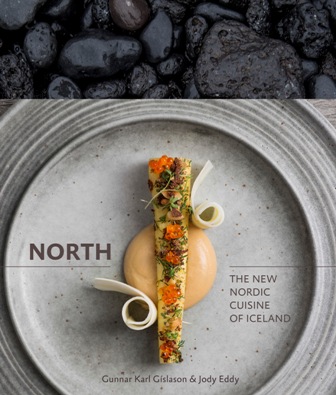
North
Gunnar Karl Gíslason and Jody Eddy Evan Sung
Ten Speed Press
September 9, 2014
$40.00/Hardcover
ISBN-13: 978-1607744986
Gunnar Karl Gíslason and Jody Eddy Evan Sung
Ten Speed Press
September 9, 2014
$40.00/Hardcover
ISBN-13: 978-1607744986
Chef Gunnar Karl Gíslason opened Restaurant Dill in Reykjavík’s historic Nordic House in 2009. His contemporary cooking, which celebrates Iceland’s pristine ingredients and artisanal producers, has garnered international acclaim and media. Dill has been nominated for the Nordic Prize and has earned numerous accolades, including Iceland’s restaurant of the year every year since it opened. In his spare time, Gíslason can be found foraging with his children for ingredients to stock his restaurant’s pantry, or salmon fishing in one of Iceland’s glacial rivers.
Jody Eddy is the author of Come In, We’re Closed, which profiled the staff meals of 25 of the world’s best restaurants. A graduate of The Institute of Culinary Education in Manhattan, she is the former editor of Art Culinaire. She first visited Dill in 2009 and has been a devoted disciple of Gíslason’s cooking philosophy ever since.
An unprecedented look into the food and culture of Iceland, from the island’s premier chef and the owner of Reykjavík’s Restaurant Dill.
NORTH is a celebration of the utterly unique, starkly beautiful foodways and landscapes of Iceland. Recipes and essays showcase the rare, indigenous food products and artisanal food producers of this island nation, which is one of the most pristine and unspoiled places on earth. New York Times photographer Evan Sung provides a mix of lush landscape photography and styled food, making this a gorgeous and definitive culinary guide to Iceland as a burgeoning travel destinations.